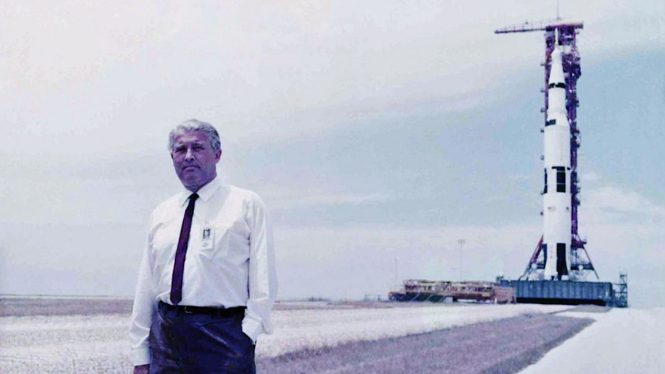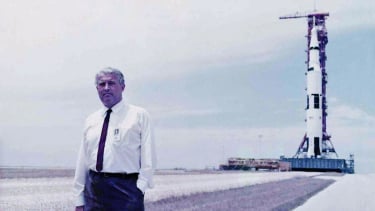A Short Biography Life of Wernher von Braun, Pioneer of Rocketry
- NASA
VIVA – Wernher von Braun is best known for his significant contributions to rocket science and space exploration in the period from 1930 to 1972. He was dubbed the Pioneer of Rocketry. Wernher was one of the scientists who developed the Saturn V Rocket - which took humans to the moon for the first time, during the Apollo 11 Mission in July 1969.
He was born on March 23, 1912, to an aristocratic family in Wirsitz, Germany, and was the middle of three children. Magnus Freiherr von Braun, his father, was a politician and held the title 'Freiherr'. His mother Emmy von Quistorp was descended from medieval European nobility and started his curiosity to know more about space.
In 1924, at the age of 12, von Braun caused a major disturbance on a busy street by setting off and lighting fireworks on his toy wagon.
He was a talented musician who played the songs of masters such as Bach and Beethoven. He was a connoisseur of music. He learned how to play the piano and cello when he was young. Although he originally wanted to be a composer but he became great in rocketry and space.
About Education
In 1925, Wernher von Braun went to boarding school at Ettersburg Castle. During his early years there, he did not excel in math or physics.
Later, he found the book 'Die Rakete zu den Planetenraumen' (With Rockets to Interplanetary Space) which inspired him to hone his skills in math and physics as space travel was something that had always fascinated him.
After school, von Braun enrolled at the Berlin Institute of Technology in 1930 where he joined the Spaceflight Society and assisted Willy Ley in liquid-fueled rocket tests.
After graduating with a degree in mechanical engineering in 1932, he continued his studies by entering the University of Berlin for a doctoral program in physics. There, he continued studying rocketry with army-funded research and received his doctorate two years later or in 1934.
About Career
His career can be divided into two main timelines, one where he worked for Nazi Germany and the second when working for the United States (US), according to the Famous Scientists website, Tuesday, January 10, 2023.
While working for the Nazis, Wernher von Braun is known as the leader of the rocket team that developed the V-2 Missile used in World War II. The missile flew for the first time in October 1942. However, in late 1944, von Braun learned that Nazi Germany could not defeat the allies. So, he made plans for his future after World War II ended.
Before the Allies captured the V-2 Rocket complex, von Braun had surrendered along with 500 rocket scientists who were also working on the project. He also handed over test vehicles and other rocket plans to the US.
Despite his involvement with the losing side in World War II, Wernher von Braun along with other rocket specialists had a successful career working for the United States government. In June 1945, he along with other specialists was transferred to Uncle Sam.
He worked with the United States Armed Forces for 15 years on the development of the ICBM. von Braun was a major part of the military operation known as Project Paperclip and along with other members of the rocket team.
They worked at Fort Bliss, Texas. The rockets they built for the United States military were launched at White Sands Proving Ground in New Mexico. In 1950, the same team of rocket scientists moved to Alabama.
Two years later, Wernher von Braun became Technical Director of the US Army Ordnance Guided Missile Project at Redstone Arsenal, near Huntsville, Alabama and he developed the Redstone rocket, a large ballistic missile based on the German V-2 Rocket.
On January 31, 1958, a rocket development team led by him successfully launched the first US artificial earth satellite, Explorer I, using a modified Redstone rocket. In 1960, von Braun and his research team were transferred to the newly established National Aeronautics and Space Administration (NASA).
Besides being the brains behind the development of the rocket that helped the US reach the Moon, he also became the United States' main spokesperson for space exploration in the 1960s.
NASA asked him to move to Washington, DC for logistical reasons in 1970. He did so and left his home in Alabama. But his time in the US capital was short-lived as he retired two years later or in 1972.
Wernher von Braun spent his last years working for the aerospace company Fairchild Industries of Germantown, Maryland. On June 16, 1977, the Nazi German scientist died of kidney cancer at the age of 65 in Alexandria, Virginia.























